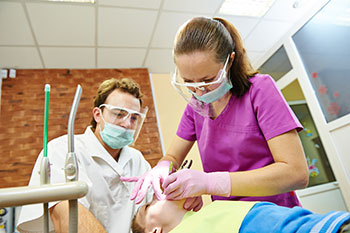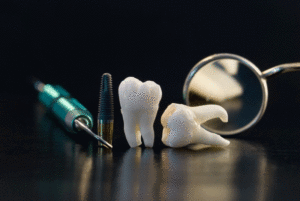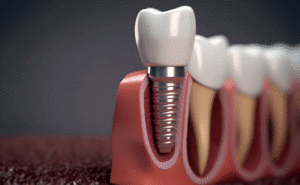Let’s face it, going to the dentist – to some – is nothing more than a tolerated inconvenience. It’s tolerated, because a professional teeth cleaning at least once every six months is key to good oral health. Others, however, find the dentist just plain scary – so scary, that they avoid it altogether. If you fall into the latter group of people, rest assured that there’s now a way where you can receive the dental care you need, but without the fear.
It’s made possible through sedation.
How sedation dentistry works
Specifically, sedation dentistry involves the use of medication to help a patient feel more comfortable and anxiety-free at the dentist. Also commonly referred to as “sleep dentistry,” sedation can be administered in treatments ranging from a standard teeth cleaning to a root canal.
There are various levels of sedation that a dentist can administer to patients, the level of which all depends on how severe of a phobia an individual has of the dentist. For instance, those who are mildly anxious about seeing the dentist may need minimal sedation, where the patient remains awake, yet very relaxed. It’s also worth noting that minimal sedation is the only form of sedation where patients are permitted to drive themselves home following the procedure. The next level is moderate sedation and then there’s deep sedation, where you’re taken to the verge of consciousness.
Sedation medications are either administered orally, via IV or inhaled.
Who needs it?
Aside from being an option for those who fear the dentist, sedation is an ideal solution for patients who:
- have a low pain tolerance
- have sensitive teeth
- are unable to sit still while undergoing a dental procedure (i.e., children)
- experience a bad gag reflex
- require a sizeable amount of dental work during a specific appointment
Alternatives to sedation dentistry
For many people, being sedated at the dentist may only be a temporary thing. For others, it may be something they outgrow over time. With that in mind, here’s a look at some alternatives to sedation dentistry (aside from just sucking it up and receiving no “side treatment”):
- Anti-anxiety techniques: Breathing techniques are just one common way to combat anxiety, whether it’s at the dentist or experienced elsewhere in day-to-day life.
- Relax: Relaxation techniques are another thing that anxious people can work on. For instance, in progressive muscle relaxation, individuals focus on tensing and relaxing each muscle group.
While there are some risks involved with sedation, it’s generally very safe – just so long as the dentist is experienced in administering it. However, patients who are overweight or experience sleep apnea may be discouraged from receiving sedation. Bottom line – if you believe you’d benefit from being sedated at the dentist, always be sure to speak with your dentist first. Learn of any risks, be sure you understand the situation and also be sure to have someone on hand to drive you home if necessary.
For more information, contact Caven Dental today.



